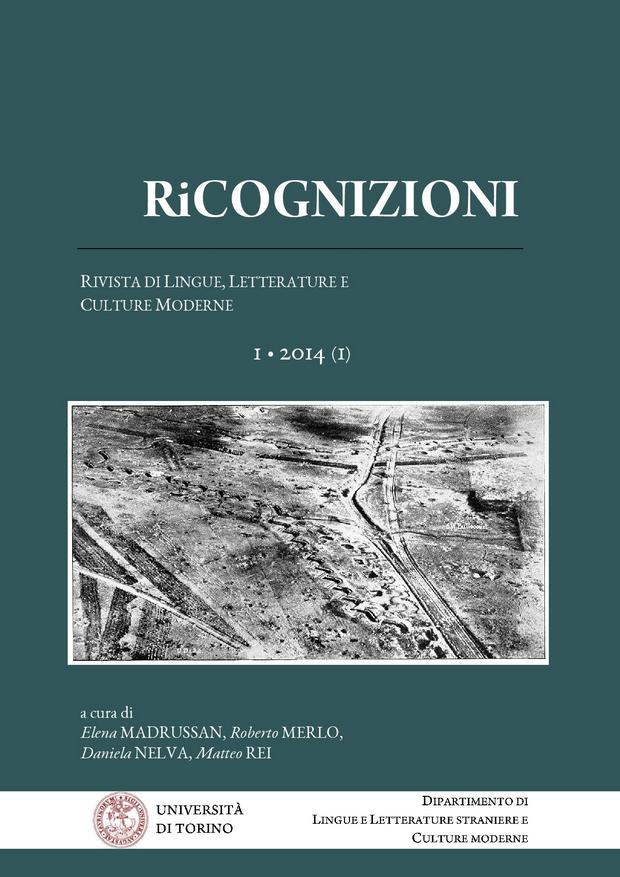The multilingual context as an extrinsic motivation factor for English language learning. A case study
DOI:
https://doi.org/10.13135/2384-8987/571Keywords:
language learning motivation, multilingual learning context, foreign language learning, English as a foreign languageAbstract
Multilingualism is a natural condition for humans. Recent studies on multilingual education have demonstrated its worth in developing the cognitive abilities and the character of learners, in addition to framing intercultural minds, a must in our increasingly globalizing world. The learning context plays an essential role in the achievement of these objectives, constituting one of the main elements of extrinsic motivation for language learning. This study analyses the motivational factors of a specific multilingual environment, that of the Liceo Internazionale Europeo Statale “Altiero Spinelli” of Turin, Italy, where students are stimulated to learn foreign languages and the English language in particular. This high school has a peculiar curriculum, based on the “L1 Project” which regulates all educational aspects. The factors taken into consideration are the curricular objectives, the participants, the languages and nationalities involved, the pedagogical approach, the teaching and learning of the English language, and several dimensions of the extended context. The paper features the results in terms of English language learning, considers the strengths and the weaknesses of the programme and suggests some directions for the development of its teaching and the learning environment.References
Bhatia, T.K. / Ritchie, W.C., (2013) (eds.), The Handbook of Bilingualism and Multilingualism (2nd edition), Chichester, Wiley-Blackwell.
Canagarajah, A.S. / Wurr, A.J. (2011), Multilingual Communication and Language Acquisition: New Research Directions, in “The Reading Matrix”, Vol. 11(1), pp. 1-15.
Cenoz, J. / Genesee, F. (1998) (eds.), Beyond Bilingualism: Multilingualism and Multilingual Education, Clevedon/Philadelphia/Toronto, Multilingual Matters.
Chow, P. / Cummins, J. (2003), Valuing multilingual and multicultural approaches to learning, in S.R. Schecter & J. Cummins (eds.), Multilingual education in practice: Using diversity as a resource, Portsmouth, Heinemann, pp. 32-61.
Dörnyei, Z. (1994), Motivation and Motivating in the Foreign Language Classroom, in “The Modern Language Journal”, 78(3), pp. 273-284.
García, O. (2009), Bilingual Education in the 21st Century: A Global Perspective, Chichester, Wiley-Blackwell.
Jørgensen, J.N. et al. (2012), Polylingualism, Multilingualism, Plurilingualism, in A Toolkit for Transnational Communication in Europe <http://www.toolkit-online.eu/docs/polylingualism.html> [last accessed 15/07/2013].
L. 90/2012: Legge 05 giugno 2012, n.90, Art.3, in materia di Ratifica ed esecuzione dell’Accordo di sede tra la Repubblica italiana e la Fondazione europea per la formazione professionale, con allegato, fatto a Torino il 22 gennaio 2010.
Murray, G. et al. (2011) (eds.), Identity, Motivation and Autonomy in Language Learning, Clevedon/Philadelphia/Toronto, Multilingual Matters.
Piano dell’Offerta Formativa a.s. 2011-2012 [unpublished document], Scuola Internazionale Europea Statale “Altiero Spinelli”, Torino. <http://www.istitutoaltierospinelli.eu/images/File/2011%202012
/POF%202012.pdf> [last accessed 29/03/2014].
Ryan, R.M. / Deci, E.L. (2000), Intrinsic and Extrinsic Motivations: Classic definitions and New Directions, in “Contemporary Educational Psychology”, 25, pp. 54-67.
Serragiotto, G. (2003), La progettazione e CLIL: I criteri per un modello, modulo online in <http://www.unive.it/nqcontent.cfm?a_id=120361> [last accessed 15/07/2013].
Ushioda, E. (2011), Motivating Learners to Speak as Themselves, in G. Murray et al. (eds.), Identity, Motivation and Autonomy in Language Learning, Clevedon/Philadelphia/Toronto, Multilingual Matters, pp. 11-24.
Wenden, A. (1991), Learner Strategies for Learner Autonomy, Englewood Cliffs, Prentice Hall.
Downloads
Published
How to Cite
Issue
Section
License
RiCognizioni is published under a Creative Commons Attribution 4.0 International License.
With the licence CC-BY, authors retain the copyright, allowing anyone to download, reuse, re-print, modify, distribute and/or copy their contribution. The work must be properly attributed to its author.
It is not necessary to ask further permissions both to author or journal board.








